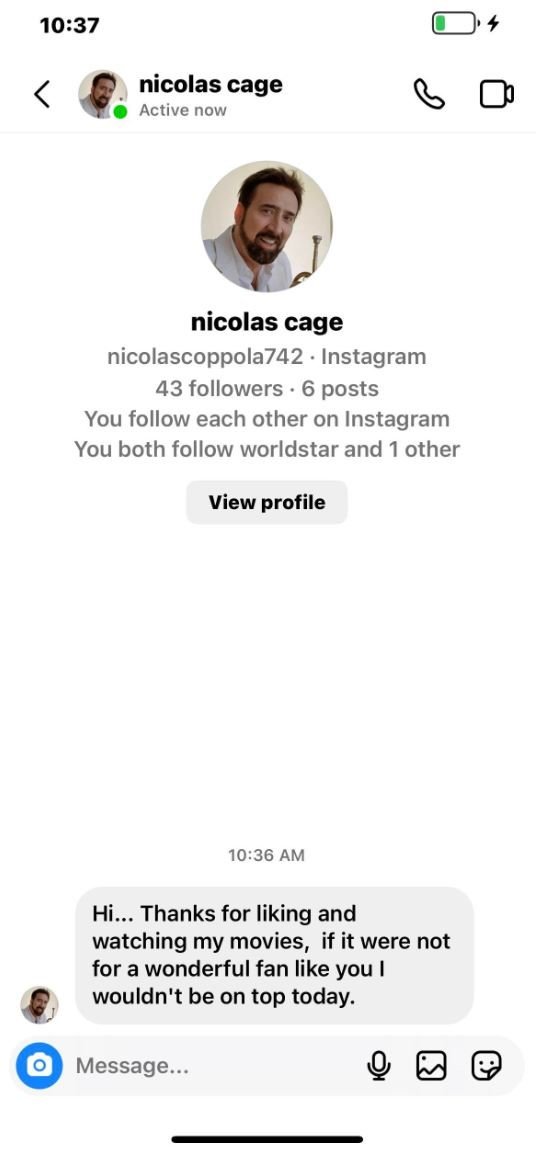About 4,5 billion people worldwide, or nearly so 55% of the world's population, have at least one account on one of the major social media. Internet users worldwide spend about two and a half hours each day reading news, sharing stories and exchanging photos on their social media platforms of choice.
In other words, social media has an incalculable effect on our lives, including how we socialize and interact with other people.

However, not all is as it seems in social media, warns Phil Muncaster from the ESET digital security team. As is the case with the internet in general, these platforms have become hotbeds of fraudsters andmobile fake news. The sheer volume of users, the dynamic nature of user-generated content, and the flexibility of malicious actors make monitoring these media extremely difficult for providers.
This means users have to take matters into their own hands.
Social media is a scammer's paradise
Among the biggest threats to watch out for are friends and followers who aren't who they claim to be. Scammers use fake profiles, often registered and managed by automated bots, to spam users with offers that are too good to be true, clickbait stories, romance scams and more. Scams can include a malicious "click to see who visited your profile" link, a fake cryptocurrency investment opportunity the one free gift card offer.
The bottom line is they want your money and/or your data. They may hope that you will click on a malicious link, secretly triggering a malware download, or that you will voluntarily hand over personal information. They might even trap you for one romantic scam ή cryptocurrency scams.
10 tips to spot scammers
Social media platforms are getting better and better at removing fake profiles and accounts. But they are not 100% successful by any stretch of the imagination. We should all be more skeptical of what we see on these websites. Muncaster from ESET suggests 10 ways to spot scammers:
- An unusual resume: Fake accounts may have bios they've copied from elsewhere, leading to a mismatched mix of offers. Also, watch for typos, excessive emojis, and/or language indicative of a bot.
- Catfishers: Scammers use fake profiles on social media, just as they do on dating sites, with the aim of establishing a romantic relationship with the victim online, before asking for money to be transferred to them. A reverse image search should be the first choice. Also check for some of the other signs of a scammer mentioned in this article.
- Mismatch between "followers" and "Following": This is especially prevalent in Instagram. Spam accounts will automatically follow hundreds or thousands of users, but few will follow them back.
- Friend Profile Photo: Sometimes scammers try to clone your friend's account. They may then send an urgent message pretending your friend is in trouble and ask for money. It happens very easily and fools many unsuspecting social media users. Always contact your friend to find out if he actually sent you such a message. Message them through another medium. Alternatively, take a closer look at the account sending the message. Displays any of the signs of fraud listed here?
- spam instant messages (Direct message - DM): Often a scammer will try to direct message you with fake offers and encourage you to DM someone else or visit a website to learn more. These accounts are fake and are used to market anything from crypto investment scams to retail scams.
- There is no official mark: The Instagram, the Facebook and X (Twitter) have badges or control marks to identify the official accounts of businesses, celebrities and others. If you see an account that purports to be an organization or a famous person, but is neither, it's likely a scam.

- Activity: Often fake accounts post a lot of content at once - perhaps with similar or identical captions - and then go silent. Or they might even not post at all. So check the quantity, quality and pace of posts.
- Gift Offers: Beware of accounts that offer you gifts and/or cash - perhaps in exchange for completing one researchs. They may impersonate a big name brand to do this. They just want your personal information.
- Deeply discounted items: Fake accounts may also promote discounted luxury items. Remember, if it's too good to be true, it usually isn't.
- Unrelated comments: If an account leaves comments on publications that are not related to this post, it is very likely that this is a fake account.
How to report fake profiles
The good news is that many social media, such as Instagram and LinkedIn, are constantly looking for ways to improve account verification and remove fake users and bots from their platforms. However, one of the best tools they have to spot fake accounts is their users. If you come across a fake profile, here's how to report it on four of the main social media:
If someone impersonates you, visit this page. If you spot a fake profile, click the button with three dots at the bottom of it photoprofile and then "Find, support or report" or "Report page".
- X (Twitter)
You can report here. Or click the three dots next to the account name and follow the instructions.
Click the three dots next to the account name, then click Report. Or do click here to report an account representing you, your business, or your child.
Click "More" under the account name, then "Report/Block" or "Report Abuse."
The best antidote we have against scammers is to make our profile private and then thoroughly vet anyone who wants to follow us. If that's not possible, consider the above to stay safer online.






IMPORTANT NEWS THANK YOU VERY MUCH